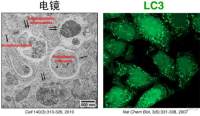BacterialBacterial Cell Interactions in Biofilms: Detection of Polysaccharide Intercellular Adhesins by Blotting and Confocal Microscopy
互联网
436
Adhesive interactions between bacterial cells coupled with adherence to a solid surface can lead to the formation of a biofilm. The important role of biofilm formation in the pathogenesis of certain types of infection, especially those involving indwelling medical devices, is becoming increasingly apparent. Critical to the development of a biofilm is the elaboration of exopolysaccharide that contributes to substrate and intercellular adhesion. The synthesis and secretion of large exo-polysaccharides is a metabolically expensive process and is therefore often suppressed under conditions that favor the planktonic mode of growth. One way to identify the environmental cues that cause a given bacterial species to switch to the biofilm mode of growth is to monitor exo-polysaccharide elaboration in vitro. The exo-polysaccharide involved in biofilm formation in a number of bacterial species is a polymer of N -acetyl-glucosamine. In this chapter, we outline two methods that use wheat germ agglutinin, a lectin that binds to N -acetyl-glucosamine, to evaluate extracellular polysaccharide production by a variety of bacterial species.









